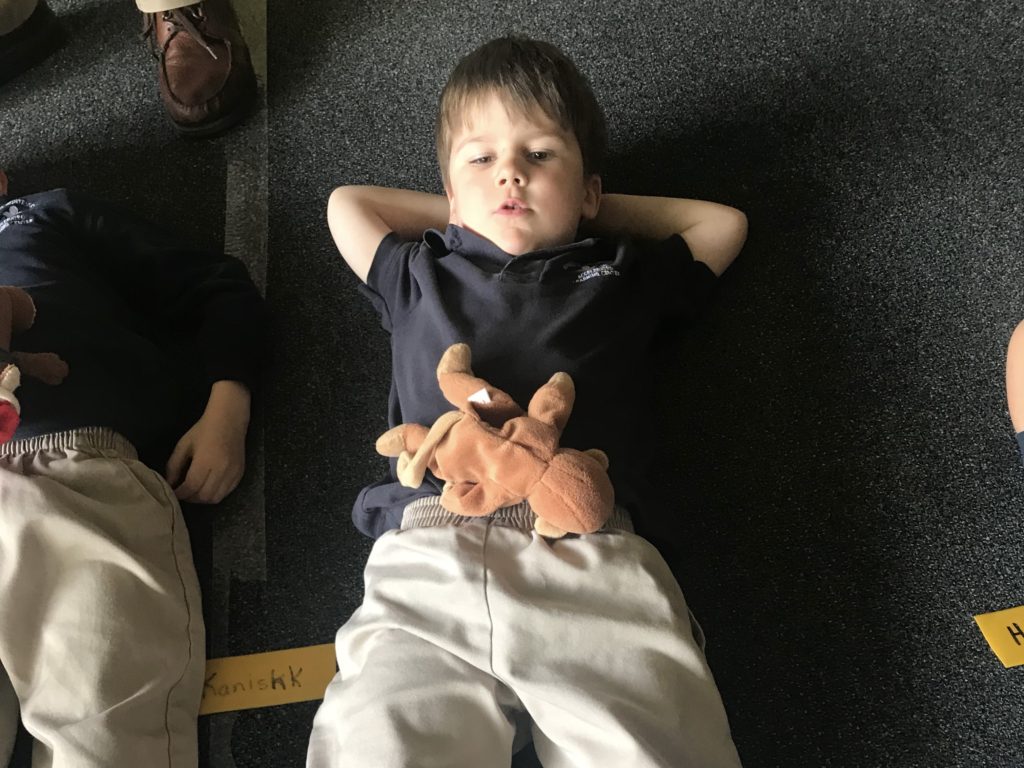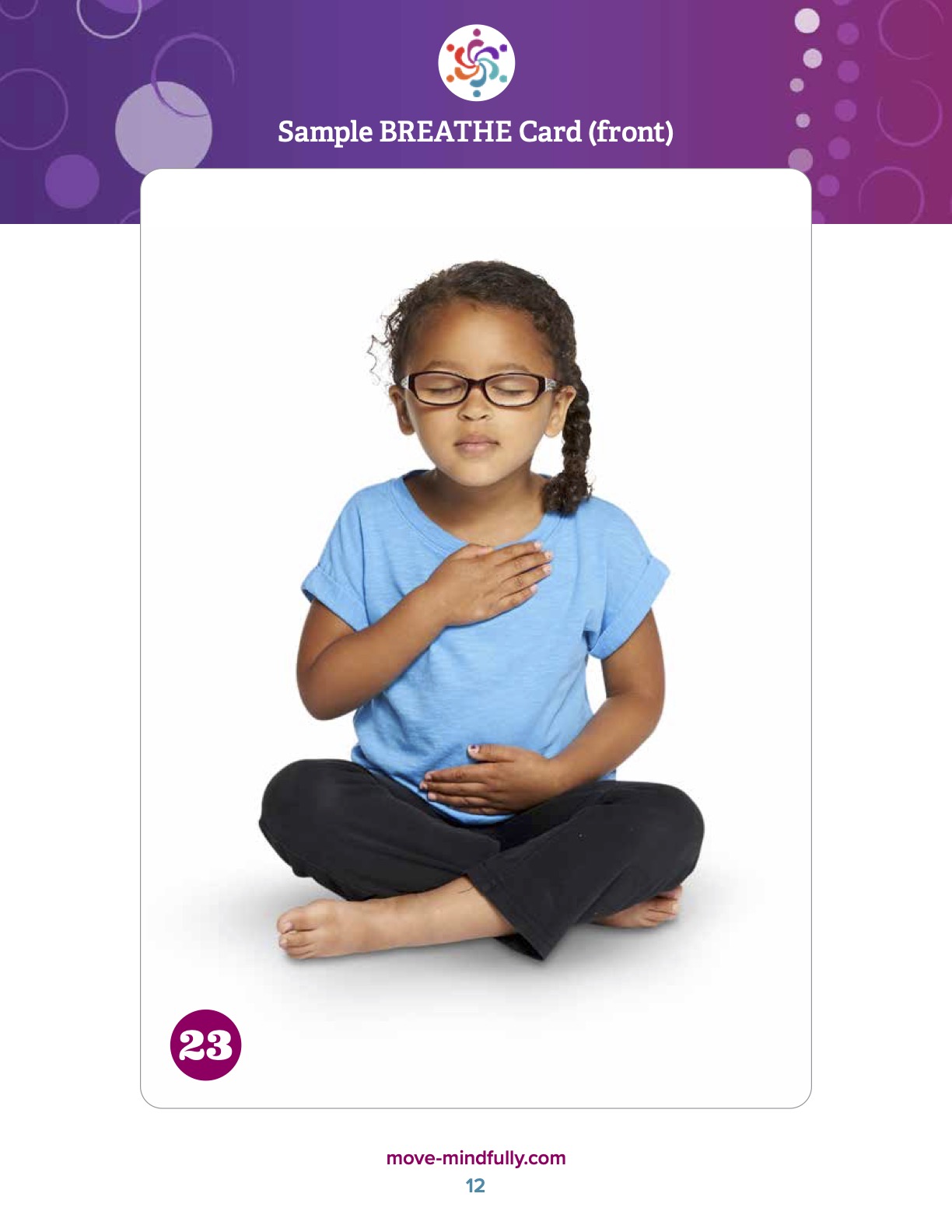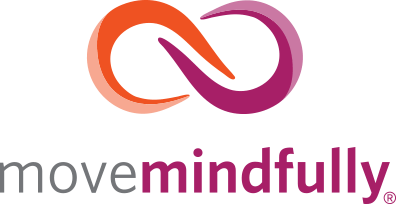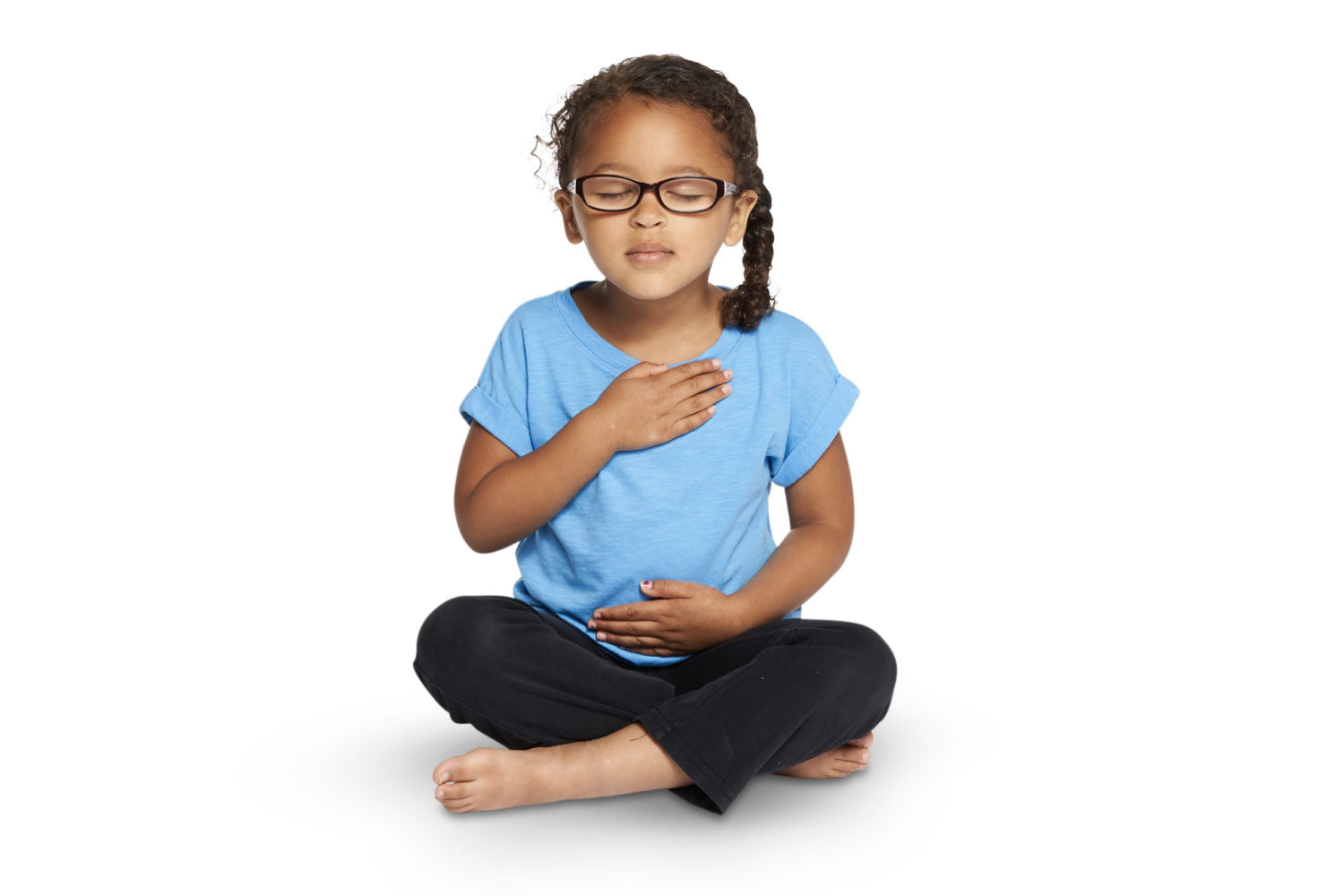Teaching mind-body practices in Early Education is so much fun!
After over a decade of experience teaching yoga-based movement and social-emotional learning in Early Education, we have learned a lot. Young children can cycle through emotions with both great intensity and great speed throughout the day. This makes teaching self-regulation skills, with structure and consistency, incredibly helpful at this developmental stage.
Many of us that work with one to five year olds use breathing to help manage big emotions. Breathing strategies are a quick and easy way to move from distress to ready to listen, learn, and play. This goes not only for our youngest learners, but for adults, too!
Here are some helpful tips when teaching breathing in Early Education environments.
Slowing Down
One of the best mind-body strategies to teach to young learners (and really, people of all ages!) is how to slow down their breathing. We know that when we are stressed our breathing becomes fast and shallow. Throughout the day, the quickest way to change how we feel – and move from stress to calm – is to simply slow down our breathing. This same technique works for young children. When young children are frustrated, scared, or even very excited, learning to slow down their breathing can help them get ready to listen, learn, and play.
Use a Buddy
One of our favorite ways to teach young children to slow down their breathing is to have them place a stuffed animal on their belly while taking slow belly breaths. We can pretend we are rocking our breathing “buddy” to sleep. By breathing slowly enough to rock their buddy to sleep, they are also calming their own mind, body, and heart. This is a great way to build a physical (or somatic) understanding of belly breathing and teach self-regulation skills.

Centering Breathing
We won’t always have a stuffed animal with us when we need to calm down! Centering Breathing – a card from our MoveMindfully Early Childhood Card Deck – is a great way to teach young children a breathing technique to use anywhere/anytime when they need to calm their mind, body, and heart.
Sitting with your young learners, invite them to place one hand on their heart and one hand on their belly.
- Place your hands on your heart and belly to model this as you sit together.
- Start to take nice slow breaths. Notice how your stomach expands each time you inhale. Next, notice how your stomach deflates when you exhale. Notice if you feel a little more centered. Once we take a few slow belly breaths, we might find ourselves in a more regulated state.
- Now, ask your young learners to feel their bellies puff up each time they breathe in and to feel their bellies sink down each time they breathe out. Notice if they seem a little more calm and grounded.
This simple activity teaches us how to slow down our breathing and take a deeper diaphragmatic breath. These belly breaths calm our mind, body, and heart. We also are connecting and co-regulating. (This same activity can be done with a child on your lap, having them feel your belly rise and fall with your breath. Your hands could be placed over their hands on their heart and belly).
As you practice Centering Breathing, notice how you feel. Ask your young learners – How does your heart feel when we breathe like this? Does it feel Quiet? Happy? Excited? Explain that when we get still and quiet, we can ask our heart how it feels. Taking time to notice how our heart feels will help us get ready to listen, learn and play together.
Strengthening the Mind-Body Connection
Asking children to notice how their bodies feel is a great way to strengthen their mind-body connection.
One of my favorite young learners used to have so much energy when we practiced MoveMindfully activities together that we needed to do a lot of movement before we were ready to sit and breathe and rest. When he would finally find that slow, calm breath, I would look over and ask, “Does your body feel calm right now?” After just a few times working together, one day, before I could even ask my question, he smiled and said quietly, “My body feels so calm right now.”
By helping young children understand with their bodies what it feels like when we access a calmer state, we are teaching important self-regulation strategies for success.
Consistency and Structure are Key
Consistency and structure are important when teaching these skills. Make time during the day (in circle time, before snack, before rest time, at end of day) to take some belly breaths together.
Show the Centering Breathing Card as a visual reminder for children when you do this activity together. Ask how they feel when they take time to breathe with you during the day. This not only teaches an important self-regulation skill to the children, but it helps us as adults regulate our stress level throughout the day.

The MoveMindfully Centering Breathing Card is available in our Free Resources.
Take a picture of you using the MoveMindfully Centering Breathing Card with your own children or the children you work with and share at @MoveMindfullyConnect #MoveMindfullyConnect

